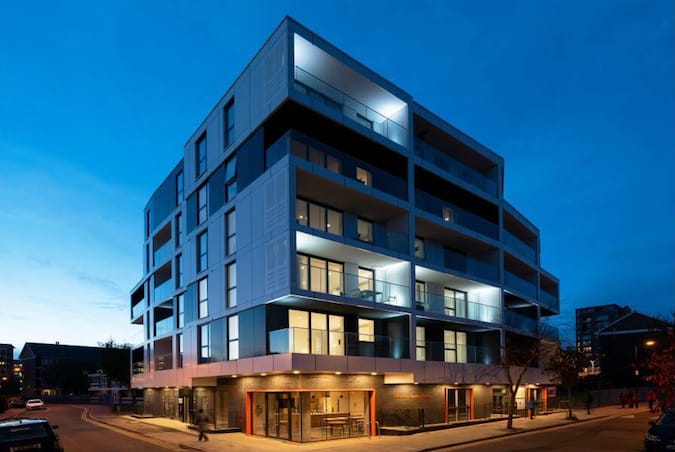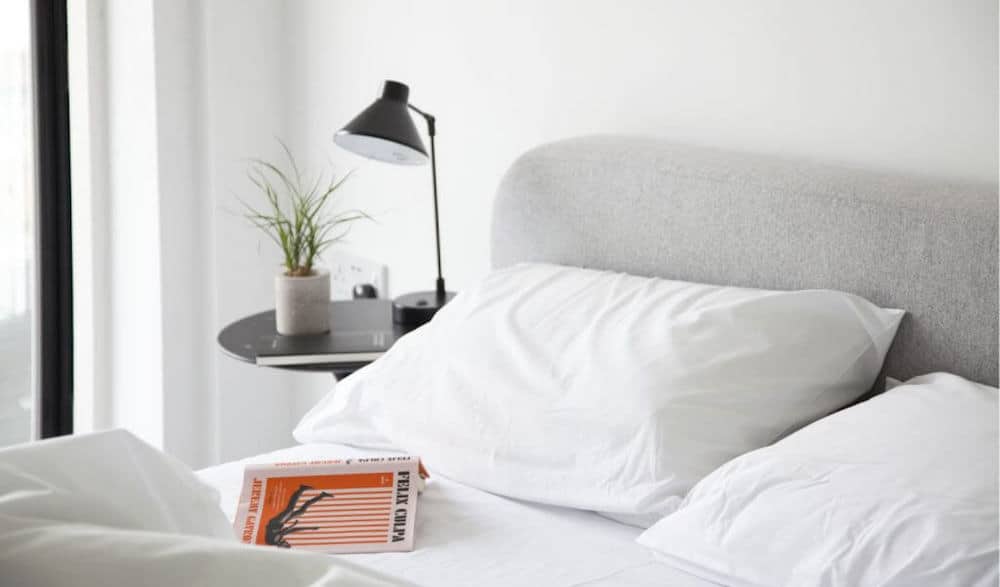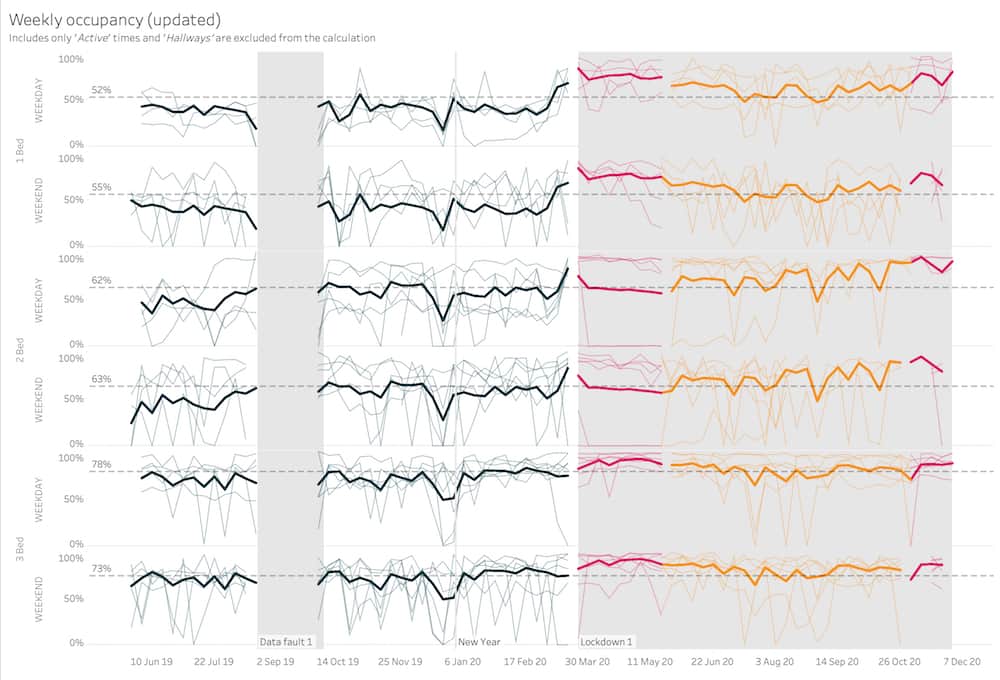Reshaping the spaces we live

It’s our belief that we can improve how property developers build flats and houses by better understanding how they are used.
Many developers create residences with little evidence of what’s important to the people who will live there. There is little data available on the use of rooms and the facilities within a building, so architects and city planners have to make assumptions about the optimal layout of residences. This means people often end up with less suitable options when looking for a home to meet their needs.
But what if we could measure occupancy, room by room, and collect and use this data to inform better design?
This is exactly what we did at our residential development The Stack, Hackney.
We invited residents to give us permission to collect and use data captured from discrete recessed ceiling mounted *sensors – installed during the build phase by sense_ our real estate intelligence platform.
And with the generous consent of over a dozen residents – living in one, two and three-bedroom apartment types – we collected 12 months of data that contrasts life during the first lockdown period with the easing of lockdown measures.

We don’t know of any other developer using sensors to inform private apartment design in this way. And, coupled with the fact the sensors have been running throughout a global pandemic, it has made for a unique social experiment.

Visual showing weekly data patterns across 1,2 and 3 bedroom apartments.
Occupancy across the building shows big changes in each ‘phase’ of the pandemic.
Weekday occupancy levels in all flat types increased between pre-pandemic months and the first lockdown, with the effect being most pronounced in the 1 bedroom flats.
Overall occupancy levels decreased in the ‘loose’ lockdown (apart from in 2 bedroom flats…), this suggests that people were enjoying the reduced restrictions, opening up of hospitality etc., and going out of their homes a lot more. This was also over the summer months, where the warmer weather and longer days were likely additional influencing factors.
Occupancy levels rose again in the second strong lockdown, though not as high as in the first strong lockdown (NB different for 2-bed flats.) potentially reflecting the slightly less restrictive rules of this lockdown period in comparison to the first. (NB different for 2-bed flats.)
Pre pandemic, in 1 and 2 bedroom flats, weekend occupancy was higher than weekday occupancy, suggesting residents spend most of the week out of their homes, likely at work. During the lockdown periods, weekday occupancy was higher than weekend occupancy in these flats, suggesting that many were working from home. (Pre pandemic, 3 bedroom flats had slightly higher weekday occupancy than weekend occupancy).
In all time periods of the study, the second bedroom in 2 and 3 bedroom flats showed very low signs of overnight occupancy. This was also the case for the third bedroom in the 3 bedroom flats. This suggests that these rooms were rarely used as a ‘bedroom’, and the residents of these flats were mainly just using the primary bedroom to sleep in.
Usage of the third bedroom in the 3 bedroom flats varied between flats, with some being used throughout the day during lockdowns, and some not.
Perhaps the big takeaway is the fact that the ‘extra bedroom’ space was used for other purposes than a bedroom e.g. workspace, dressing room or spare bedroom. This raises the question of how these spaces can be designed to be more adaptable and flexible for use – and not follow a cookie-cutter bedroom layout.
And, unforeseen before the pandemic, the vital importance of having outside living space. All of our current live developments have outside space – see The Rise and Stratford Park – proof of how we’re taking these learnings to help inform future decisions on how we can create apartments that make the most of buyers’ living space.
A big thank you again to all residents who participated.
*respectful of residents personal privacy, the types of sensors installed detected motion only – and all data has been anonymised.
